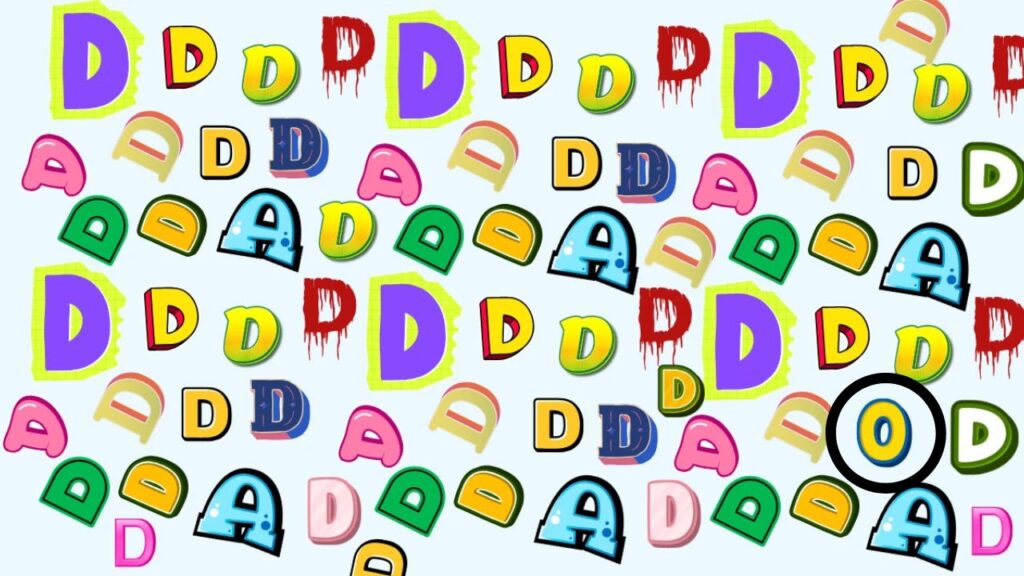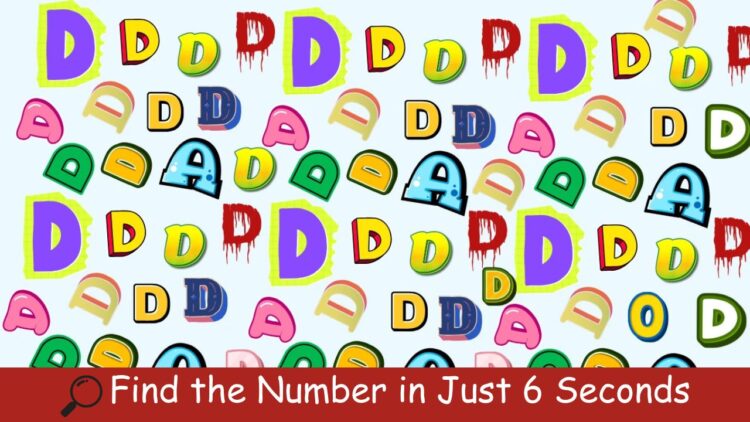Ready for a quick brain workout? This visual illusion puzzle is designed to test your sharpness. Hidden within a grid filled with colorful, decorative uppercase D letters, lies a single number 0—and your challenge is to spot it in just 6 seconds.
The task might seem simple at first, but the colorful chaos and repetitive patterns make this puzzle trickier than it appears.
Why Spotting the 0 Is So Difficult
The reason this illusion is so challenging lies in the visual similarity between the number 0 and the letter D. Both share a rounded form, but there’s a crucial distinction:
- The letter D has an open straight side.
- The number 0 forms a complete, closed loop.
Throw in multiple fonts, colors, and a tightly-packed grid, and your eyes will have a hard time differentiating the subtle forms—forcing your brain to work harder and potentially causing you to miss the 0 on a first glance.
Tips to Spot the Hidden 0 Quickly
Want to increase your chances of success? Use these techniques to improve your visual search:
- Look for Closed Shapes: Only the number 0 is a fully enclosed loop—unlike the Ds that have an opening.
- Scan the Edges First: Most people’s eyes go straight to the middle. Flip the strategy and start from the outer corners.
- Divide and Conquer: Mentally break the grid into sections and scan them individually.
- Seek Symmetry: The 0 tends to have a smoother, more uniform shape compared to the Ds’ straight edge.
The Big Reveal: Where Was the 0?
Didn’t find it in time? Here’s the answer:

The number 0 was subtly hidden in the bottom-right corner of the image.
Once your eyes catch the closed-loop structure, it becomes glaringly obvious—yet during a frantic 6-second scan, it’s easy to overlook.
What It Means If You Spotted the 0 Fast
Managing to find the hidden 0 in just six seconds reveals some impressive cognitive strengths:
- Exceptional attention to detail
- High-speed shape recognition
- Strong spatial intelligence
- Ability to tune out visual clutter
These are essential skills in professions that demand precision, such as graphic design, editing, inspection work, and even fields like data analysis.
How These Puzzles Boost Brainpower
Don’t underestimate the value of a quick puzzle. Visual challenges like this improve key mental skills:
| Cognitive Skill | Benefit |
|---|---|
| Visual Discrimination | Detect subtle shape differences |
| Pattern Recognition | Identify anomalies in complex images |
| Selective Focus | Block out distractions to hone in on details |
| Processing Speed | Make fast visual decisions under pressure |
| Cognitive Flexibility | Adapt mental strategies during problem-solving |
Regularly solving optical illusions is a fun and effective way to keep your brain alert and maintain sharpness as you age.
Challenge Others and Compare Scores
Think you’ve got a sharper eye than your friends? Share this visual illusion and see who can beat the clock. Most people miss it the first time, making it a fun and competitive way to test mental focus.
More Puzzles Coming Your Way
Loved this brain teaser? Stay tuned for upcoming challenges, including hidden letters, mirror-image illusions, shape swaps, and more. Each puzzle is crafted to train different parts of your brain—and keep you entertained!
Spotting the number 0 hidden among the Ds is more than a fun visual trick—it’s a powerful test of your cognitive skills. If you succeeded within 6 seconds, you likely possess excellent visual processing and attention to detail. If not, don’t worry—each attempt strengthens your mind and improves your recognition skills.
So, keep practicing, challenge others, and enjoy the process of boosting your brainpower. More mind-bending illusions await!
FAQs
Why is the number 0 hard to spot among the Ds?
The number 0 and the uppercase D look similar due to their rounded shapes. When fonts and colors vary, this resemblance increases, making the closed loop of the 0 harder to distinguish.
How can these puzzles help my brain?
Visual puzzles enhance mental flexibility, attention span, pattern recognition, and quick decision-making—valuable skills for everyday life and professional settings.
Can kids and adults both benefit from these challenges?
Absolutely! These puzzles are beneficial for all age groups, helping children develop focus and adults maintain cognitive sharpness.

